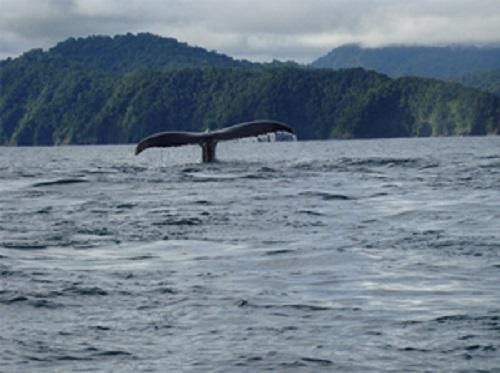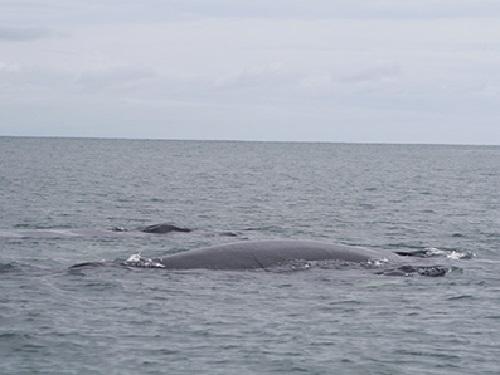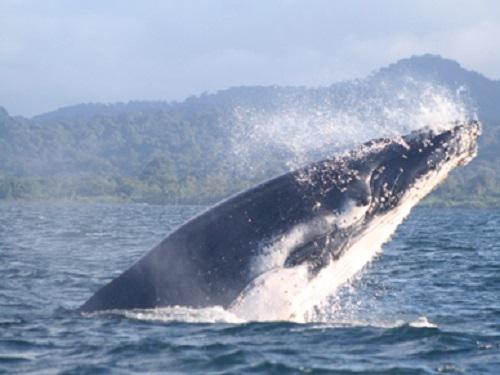Natalia Botero Acosta
Other projects
18 Dec 2009
Diagnosis of the Taxonomic Composition, Spatial Distribution, Social Structure and Conservation Threats of Marine Mammals in Tribugá’s Gulf
23 Jul 2015
Using Satellite Telemetry to Determine the Role of Escorts Joining Mother and Calf Pairs of Humpback Whales in the Colombian Pacific
We intend to provide baseline information for the development of a long-term strategy to study and conserve humpback whales and their associated ecosystems by means of scientific research, environmental education and integration with the whale watching tourism.

Humpback Whale NBA.
In Colombia, while tourism increases, research efforts remain limited. To fulfil informational gaps and promote conservation efforts, this project will describe the patterns of spatial distribution, social structure, and acoustic and surface behaviour of humpback whales wintering off Tribugá's Gulf, Colombian Pacific.

This project will take place between May and October. A total of 75 boat trip will be made, depending on the oceanographic and climatic conditions. Information about group size, age classes, surface behaviour, diving patterns, heading, position and oceanographic/climatic conditions will be recorded. A single hydrophone will be deployed when the boat is stopped, whenever singers are detected. Photographs of the dorsal and caudal fins of each individual will be taken to complement a photo-id catalogue started in a previous study. Individuals will be classified as part of the same group if they maintain within 100m of each other, move in the same direction, and exhibit coordinated surface behaviour. The age class of the animals will be determined following the relative size criterion, differentiating between adults, subadults and calves.

Whale watching tourism can be used as a platform for scientific research. Our team recognizes the considerable potential of this activity, while simultaneously acknowledging the need to implement available regulations in order to prevent negative effects. The current project will promote sustainable ecotourism practices working in association with the local communities. Detailed records of the presence and type of approach of touristic vessels will inform of potential concerns. Environmental awareness activities will include a whale-watching protocol, participation in the Migration Festival, and recreational activities.
The spatial distribution of recorded sightings will be described, as coordinates will be plotted on ArcMap10.1. A Linear Regression Analysis will be completed to test the presumed effect of oceanographic and climatic variables over the observed distribution of the different age classes. Analysis of frequency will examine the possible patterns of variation of the frequencies of behavioural events during the study period. The same type of analysis will examine the presumed influence of social context (affiliations vs. disaffiliations) over the frequencies of behavioural events. Spectrograms depicting the basic acoustic parameters of recorded sounds will be made using Raven Pro 1.5 bioacoustics software. A Multivariate Analysis of Variance will examine the variation of specific parameters pulled from songs in order to describe its basic structure and the presumed temporal changes that occur throughout the breeding season.